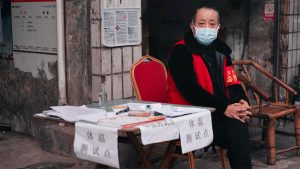This is the first in a series of newsletters addressing the state of the COVID-19 pandemic around the world. Other articles in the series cover the United States, the Persian Gulf, East Asia, Europe, and the BRICS.
For the next few days, the team here at Zeihan on Geopolitics will be sharing a few snapshots of the pandemic from around the world. This is less a holistic assessment and instead us taking the temperature of some major countries so that readers have an idea of the pandemic’s future trajectory.
As with all things coronavirus, the first question is where to start. Most COVID-related data is, in a word, unreliable.
New hospitalizations data are wildly misreported. Useful new deaths data assume patients were tested for COVID at all, and comparing death rates from COVID across countries assumes a common quality of care. Any hospital-related or death-related data assumes that the health system wasn’t overwhelmed (and so suffered no breakdowns in data collection) as well as being very well funded and staffed (and so had the luxury of being able to test everyone). Considering how infectious COVID is and how many health personnel have died of it, those can be tall bars in places where the epidemic rages hot.
So for this exercise we are using the dataset that is most cross-comparable: new cases as a percentage of the overall population.
It isn’t a perfect measure. Many, many countries – the United States included – have wildly insufficient testing regimes. Different countries (and different states, and different cities, and different hospitals) use different criteria when determining who to test. Nor is there a best-practices policy for how to report. Just as importantly, upwards of half of all COVID cases are asymptomatic, and even those who develop symptoms are typically presymptomatic for two to five days before symptoms set in. Everyone should assume that all new case data underreports the reality.
Perhaps most importantly, national data like this tends to mute local outbreaks such as what struck New York City, dissolving the intense local data within a national whole that is far less dramatic. So don’t use this series of newsletters as justification for actions either cautious or rash. It is nothing more than this: our best understanding of countries’ broad trajectories.
The raw data comes from the COVID Tracking Project and the European Centre for Disease Prevention and Control. The Financial Times runs the data through their graphics creator. In our opinion, access to the FT’s COVID interface all by itself more than justifies the FT’s full subscription price (and yet its free!).
We’re going to begin with Latin America.

Geography shapes all countries and populations, and a deep study of map sets can help you know what to look for. Latin America’s tell has to do with the balance of tropics and elevation. Life in the tropics is rough: lack of winter insect kills enables diseases to run rampant, most grain-based crops cannot ripen in the high humidity, simply getting concrete or asphalt to set is an aggravating exercise. As a result, most of Latin America’s largest cities are not on the coast, but instead upland to escape the heat and humidity.
A few fun points of reference: The United States only has one post office above 10,000 feet. The bulk of Bolivia’s population lives in the Altiplano, a region whose low point is at 12,000 feet. America’s highest elevation metro, Denver, famously sits one mile up; over half the Mexican population lives on a plateau over 2000 feet higher. Colombia’s major cities perch on the flanks of mountains too high to live atop.
Since infrastructure connections are few and crowded and expensive to build and maintain, living up high is expensive. But there can be perks (beyond the view): When infrastructure is a limiting factor, populations must concentrate where the roads go. One result? Dense population footprints. That somewhat simplifies the process of providing government services, services such as health care. While that services concentration certainly hasn’t prevented COVID outbreaks in Latin America, we feel it has provided the region as a whole with (slightly) more reliable testing data than the developing world writ large. Unlike India or Indonesia or Nigeria whose COVID numbers are hilariously low (more on all three in future newsletters), we feel Latin America’s data only understates the number of cases by a factor of five or less.
But what is most obvious is that no Latin American country has the epidemic under control. Throughout the region case loads are only building, and with vanishingly few exceptions (fingers crossed for Costa Rica) the virus is now likely endemic and we do not expect to see meaningful drops in case numbers until such time as a vaccine is widely available.
For Americans, the country that matters most is of course Mexico. The two neighbors have a great deal in common.
Both are federal systems with relatively weak central governments. Most policy decisions which impact day-to-day life – like say, anti-COVID efforts – are made at the state and local level. For both countries this is both good and bad. Good in that both countries are sprawling laboratories for best health practices. Bad in that the lack of national action on coronavirus has enabled the bug to become established everywhere.
The two countries also share a certain demographic geography, characterized by cities which freckle huge swathes of lightly populated territory. That means that as the COVID pandemic stretches on, both have the opportunity to isolate localized outbreaks without needing to shut down either country as a whole. Americans and Mexicans went into the outbreak together, they are dealing with the outbreak in more or less the same way, and they will come out of it together. That hardly makes everything firelight and marshmallows, but it befits a pair of countries who are now each other’s greatest and most reliable political, cultural, economic and security partners.
To that end, our next webinar – scheduled for June 16 – will be on the status of the Mexican system, ranging from manufacturing supply chains to the local COVID epidemic to debt markets to economic and diplomatic relations with the United States. Sign up information can be found here:
Newsletters from Zeihan on Geopolitics have always been and always will be free of charge. However, if you enjoy them or find them useful, please consider showing your appreciation via a donation to Feeding America. One of the biggest problems the United States faces at present is food dislocation: pre-COVID, nearly 40% of all foods were not consumed at home. Instead they were destined for places like restaurants and college dorms. Shifting the supply chain to grocery stores takes time and money, but people need food now. Some 23 million students used to be on school lunches, for example. That servicing has evaporated. Feeding America helps bridge the gap between America’s food supply (which remains robust) and its demand (which coronavirus has shifted faster than the supply chains can keep up).
A little goes a very long way. For a single dollar, FA can feed one person for three days.








